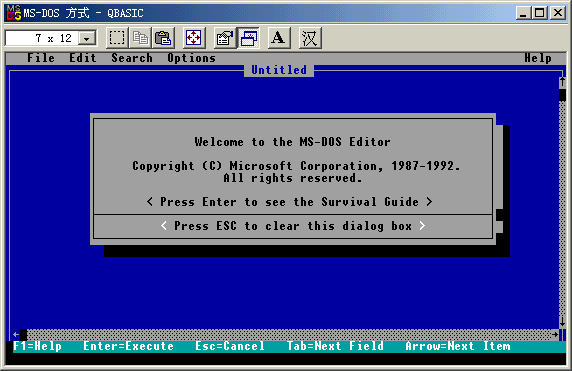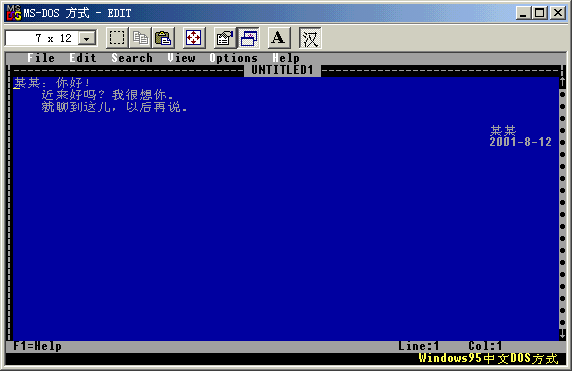MS-DOS Editor
MS-DOS Editor is a useful program that opens or creates a plain text file and edits it. It is especially useful when you are running MS-DOS or running "MS-DOS prompt".
MS-DOS Editor for Windows 9x/2000 is a newer version of MS-DOS Editor. MS-DOS Editor for MS-DOS 5.0 or higher is an older version. There are some major differences between them: The newer version can be used to edit custom language (non-European) files under Windows 9x, and it supports Windows style shortcut keys such as Ctrl + X, Ctrl + C, Ctrl + V. Additionally, it can have multiple files open at a time. It also supports long filenames when running from Windows 9x/2000. The older version is provided by QBasic For MS-DOS Version 1.1, so it can also be an interpreter for QBasic programs. In this way, the older version is larger, and the newer version is smaller.
The older version of MS-DOS Editor consists of two files: One is "EDIT.COM", the other is "QBASIC.EXE". In fact, you can use it without the file "EDIT.COM". To do this, just type "QBASIC.EXE /ED[ITOR] filename" at the command prompt. "EDIT.COM" requires "QBASIC.EXE". The newer version of MS-DOS Editor consists of only one file: "EDIT.COM". Only the file is enough.
It is all right to copy and paste text in the older version of MS-DOS Editor. The only thing you have to do is replacing Ctrl + X, Ctrl + C and Ctrl + V with Shift + Delete, Ctrl + Insert and Shift + Insert respectively. Still, you can see these keysets valid in editors running on Windows, such as Notepad, Wordpad and EditPlus.
There is an important function that MS-DOS Editor features. It is setting the stop size of TABs. By default, this setting is 8, but for some programmers, they may prefer to have a TAB stop size of 4 or less, so I say this function is sometimes very important.
There are some minor differences between the two versions of MS-DOS Editor. One is that the older version doesn't allow changing TAB stop size when a file is loaded (only when it is running as MS-DOS Editor; It allows when running as MS-DOS QBasic). Another is that the older version doesn't allow spaces at the end of lines, that is to say, it deletes spaces at the end of a line when you move the cursor away from that line, and it ignores them while saving the file.
See screen shots of both versions of MS-DOS Editors:
The older version:

The newer version:


